Introduction
In the world of culinary delights, few dishes can transport you to a tropical paradise quite like Tropical Grouper with Spicy Coconut-Ginger Sauce. This vibrant recipe combines the flaky goodness of grouper fillets with a rich and zesty sauce that tantalizes the taste buds. The fusion of fresh flavors—coconut, ginger, and spices—creates a symphony of taste that is both refreshing and satisfying. This dish not only brings the essence of the tropics to your dining table but also embodies the spirit of healthy eating, making it an excellent choice for any occasion.
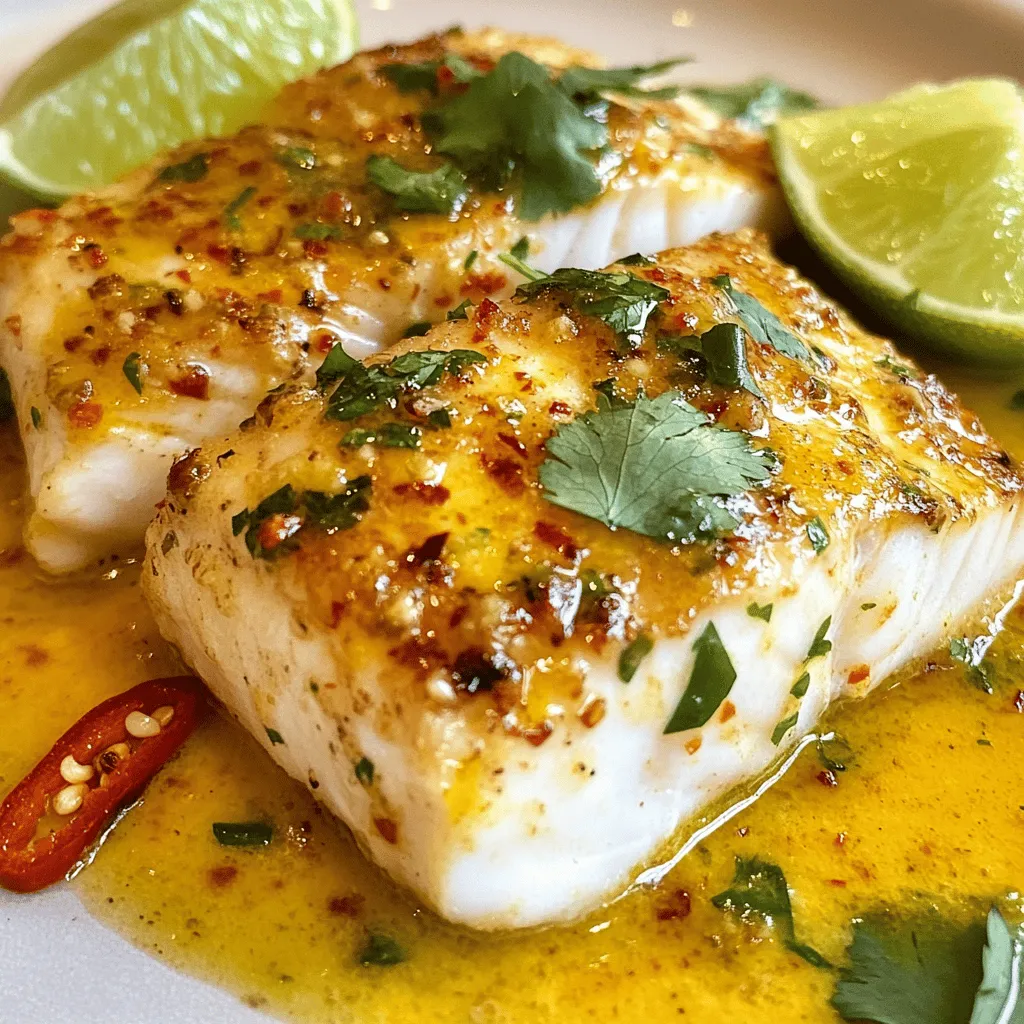
Whether you’re hosting a dinner party or simply looking to elevate your weeknight meals, this dish promises to impress. Imagine the scene: a beautifully plated grouper fillet, glistening with a spicy coconut-ginger sauce, served alongside fragrant jasmine rice and vibrant steamed vegetables. It’s a feast for both the eyes and the palate.
In this article, we will explore every aspect of preparing this delicious meal, from detailed ingredients and preparation steps to insights about the health benefits and origins of the ingredients used. You’ll discover not just how to cook the dish, but also the culinary journey that brings it to life.
Understanding the Ingredients
Before diving into the preparation steps, it’s essential to understand the key ingredients that make this dish truly special. Each component contributes not only to the flavor but also to the nutritional profile, making this meal a wholesome choice for any occasion.
Grouper: Nutritional Benefits and Sustainability
Grouper is a versatile fish that is celebrated for its mild flavor and flaky texture. It is a lean source of protein, rich in essential nutrients such as omega-3 fatty acids, which are beneficial for heart health. Additionally, grouper is low in calories and provides important vitamins and minerals, including vitamin B12, selenium, and potassium.
When selecting grouper, consider the sustainability of your choice. Opt for seafood that has been sourced responsibly, which helps protect marine ecosystems and ensures that future generations will enjoy these resources. Look for labels or certifications from organizations such as the Marine Stewardship Council (MSC) to support sustainable fishing practices.
Coconut Milk: Health Benefits and Culinary Uses
Coconut milk is a star ingredient in many tropical dishes, offering a creamy texture and a subtly sweet flavor. It is derived from the flesh of mature coconuts and is rich in saturated fats, particularly medium-chain triglycerides (MCTs), which are known for their potential health benefits, including improved metabolism and energy levels.
In addition to its nutritional advantages, coconut milk is incredibly versatile in the kitchen. It can be used in various dishes, from soups and curries to desserts and smoothies, enhancing the richness and flavor profile of each recipe.
Fresh Ginger: Flavor Profile and Health Advantages
Ginger adds a unique warmth and spice to this dish, with its pungent and aromatic qualities. As a staple in many culinary traditions, it not only enhances the flavor but also provides numerous health benefits. Ginger has long been used for its anti-inflammatory properties and is known to aid digestion and alleviate nausea.
In this recipe, fresh ginger is essential for crafting the spicy coconut-ginger sauce, where it pairs beautifully with coconut milk and other spices, creating a harmonious balance of flavors.
Red Curry Paste: Spice Levels and Variations
Red curry paste serves as the flavor base for the sauce, contributing depth and complexity. Made from a blend of red chilies, garlic, shallots, lemongrass, and other spices, it can range in heat level, allowing you to adjust the spice according to your preference.
When selecting red curry paste, you may come across various brands and homemade versions. Be sure to check the ingredient list for additives, and consider experimenting with different types to find one that suits your taste.
Lime Juice: The Role of Acidity in Cooking
Citrus plays a crucial role in balancing flavors, and lime juice is no exception. The acidity cuts through the richness of the coconut milk and complements the sweetness of the ginger, enhancing the overall flavor profile of the dish. Lime juice not only adds brightness but also provides a dose of vitamin C, making it a healthy addition to your meal.
Fish Sauce: Importance in Southeast Asian Cuisine
Fish sauce is a staple in many Southeast Asian recipes, lending a salty, umami flavor that enhances the overall taste of the dish. Made from fermented fish, it may sound intimidating, but it adds a depth of flavor that is hard to replicate with other ingredients.
When using fish sauce, a little goes a long way. It’s important to choose a high-quality brand, as the flavor can vary significantly. Look for fish sauce made from natural ingredients without unnecessary additives for the best results.
Preparation Steps
Now that we’ve covered the essential ingredients, let’s move on to the preparation steps to create this tantalizing Tropical Grouper with Spicy Coconut-Ginger Sauce.
Preparing the Grouper Fillets
The first step in preparing this dish is selecting and preparing your grouper fillets. The quality of the fish is paramount, so it’s worth taking the time to find the best possible option.
1. Rinsing and Drying Techniques for Optimal Flavor: Start by rinsing the grouper fillets under cold water to remove any residual scales or impurities. After rinsing, pat them dry with paper towels. This step is crucial as it helps achieve a nice sear when cooking, preventing the fish from steaming.
2. The Importance of Seasoning: Season the fillets generously with salt and pepper on both sides. This simple step enhances the natural flavors of the fish and prepares it for the sauce. Allow the seasoned fillets to rest for about 10-15 minutes at room temperature, which helps in even cooking.
3. Tips for Selecting the Best Grouper: When shopping for grouper, look for fillets that are firm to the touch and have a moist appearance. Fresh grouper should have a clean, ocean-like smell. If possible, buy from a reputable fishmonger who can ensure the fish is sustainably sourced.
Crafting the Spicy Coconut-Ginger Sauce
The heart of this dish lies in the spicy coconut-ginger sauce, which brings everything together in a delightful blend of flavors. Here’s how to create it:
1. Step-by-Step Guide to Creating the Sauce: In a medium saucepan, heat a tablespoon of oil over medium heat. Once the oil is shimmering, add a tablespoon of fresh grated ginger and sauté for about 30 seconds until fragrant. Be careful not to burn the ginger, as it can turn bitter.
2. Adding the Red Curry Paste: Next, add 2-3 tablespoons of red curry paste, depending on your preferred spice level. Stir well to combine, allowing the paste to cook for an additional minute. This step activates the spices and intensifies the flavor.
3. Incorporating Coconut Milk and Seasoning: Pour in one can (approximately 400 ml) of coconut milk and bring the mixture to a gentle simmer. Stir in the juice of one lime and a splash of fish sauce. Taste the sauce and adjust seasoning as necessary, adding more lime juice or fish sauce to balance the flavors.
4. Flavor Balancing: Adjusting Spice Levels: If you prefer a spicier sauce, consider adding a pinch of red pepper flakes or a few slices of fresh chili. Conversely, if you want to mellow the heat, adding a bit more coconut milk can help achieve a creamier, softer flavor profile.
5. Common Mistakes to Avoid When Making Sauces: One common mistake when making sauces is not tasting as you go. Always sample your sauce before serving to ensure the flavors are balanced. Additionally, avoid cooking the sauce on high heat, as this can lead to separation of the coconut milk and may affect the final texture.
Cooking the Grouper to Perfection
With the sauce prepared, it’s time to cook the grouper fillets to golden-brown perfection.
1. Choosing the Right Cooking Oil: For best results, select an oil with a high smoke point, such as canola or avocado oil. This ensures that the fish sears nicely without burning. Heat 1-2 tablespoons of oil in a large skillet over medium-high heat.
2. Techniques for Achieving a Golden-Brown Crust: Once the oil is hot, carefully place the grouper fillets into the skillet. Allow them to cook undisturbed for about 3-4 minutes on one side. Do not flip the fish too early; wait until it naturally releases from the pan for a perfect crust. Flip the fillets and cook for an additional 3-4 minutes until they are opaque and flake easily with a fork.
By following these preparation steps, you’ll be well on your way to creating a delicious Tropical Grouper with Spicy Coconut-Ginger Sauce that is sure to impress your guests and elevate your culinary repertoire. In the following sections, we will delve into tips for ensuring the best results and address common questions that may arise as you embark on this cooking adventure.
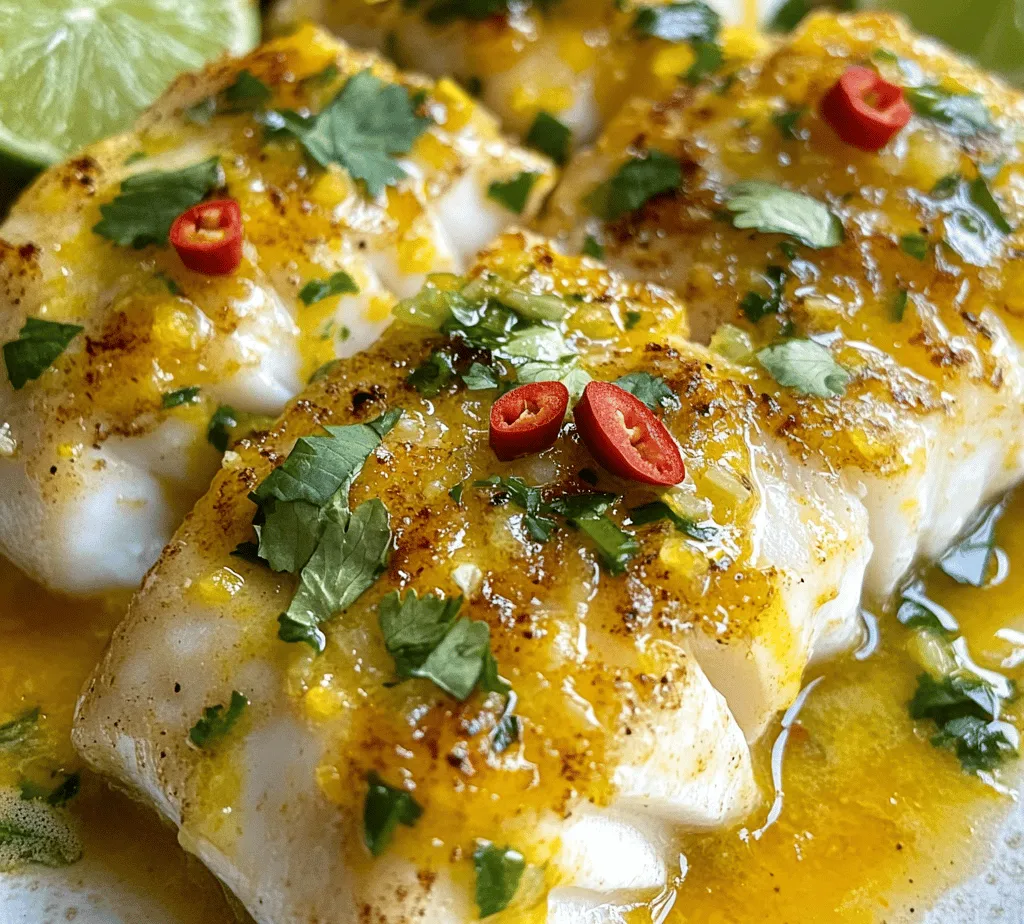
Ensuring the Fish is Cooked Through Without Drying Out
Cooking fish can be tricky, but with a few simple techniques, you can ensure that your tropical grouper is perfectly cooked while retaining its moisture and flavor. Grouper is a firm, white fish that cooks relatively quickly, so monitoring the cooking time is essential.
1. Cooking Method: The best way to cook grouper without drying it out is by pan-searing or baking. If you choose to pan-sear, heat a non-stick skillet over medium-high heat and add a tablespoon of oil. For baking, preheat your oven to 375°F (190°C).
2. Cooking Time: For fillets that are about 1-inch thick, cook for approximately 4-5 minutes on each side if pan-searing, or bake for about 15-20 minutes until the fish is opaque and flakes easily with a fork. The internal temperature of the fish should reach 145°F (63°C).
3. Monitoring the Fish: To check for doneness, look for the fish to turn from translucent to opaque. If it begins to flake too easily while still in the pan or oven, it might be overcooked.
4. Resting Period: Once cooked, allow the fish to rest for a couple of minutes before plating. This helps redistribute the juices throughout the fillet, enhancing its moisture.
Plating and Serving Suggestions
Creating an Aesthetic Presentation
Presentation plays a vital role in enhancing the dining experience. Here are some tips to plate your tropical grouper beautifully:
1. Choose the Right Plate: Opt for a large, white plate that contrasts beautifully with the vibrant colors of the dish. The white background will highlight the golden-brown grouper and the bright, colorful sauce.
2. Layering the Dish: Start by placing a generous portion of the spicy coconut-ginger sauce on the plate. Lay the grouper fillet on top, allowing some sauce to cascade over the fish.
3. Garnishing: Fresh garnishes elevate the visual appeal and flavor. Finely chop cilantro and sprinkle it over the fish. For an extra kick, slice fresh red chili peppers and arrange them artfully around the dish.
The Importance of Garnishing with Cilantro and Chili
Garnishing is not just about aesthetics; it adds layers of flavor and freshness. Cilantro brings a hint of earthiness that complements the richness of the coconut sauce, while the red chili adds a touch of heat and color, making the dish visually appealing and stimulating the palate.
Serving Suggestions: Pairing with Side Dishes
When it comes to side dishes, balance is key. The tropical flavors of the grouper pair well with a variety of sides:
- Coconut Rice: This staple complements the coconut-ginger sauce and adds a fragrant element to the meal. To make coconut rice, replace half the water with coconut milk when cooking rice.
- Grilled Vegetables: Seasonal grilled vegetables like zucchini, bell peppers, and asparagus provide a refreshing crunch and color contrast. Drizzle them with olive oil and season lightly with salt and pepper before grilling.
- Fresh Salad: A vibrant salad with mixed greens, avocado, mango, and a light vinaigrette can serve as a refreshing accompaniment, balancing the richness of the fish.
Enhancing the Dining Experience with Lime Wedges
Lime wedges served alongside the dish not only enhance the presentation but also encourage diners to squeeze fresh lime juice over their grouper. The acidity from lime cuts through the richness of the coconut sauce, brightening the flavors and adding a burst of freshness to each bite.
Nutritional Information
Analyzing the Health Benefits of Tropical Grouper
Understanding the nutritional profile of tropical grouper can be beneficial for those looking to maintain a balanced diet. Here’s a breakdown of the dish’s caloric and macronutrient content, as well as the benefits of including fish in your meals.
1. Caloric Breakdown of the Dish: A serving of tropical grouper with spicy coconut-ginger sauce typically contains around 350-450 calories, depending on the cooking method and portion size. This calorie count makes it a reasonable choice for those monitoring their caloric intake.
2. Macronutrient Profile:
- Proteins: Fish is an excellent source of high-quality protein. A serving of grouper contains approximately 30 grams of protein, which is essential for muscle repair, immune function, and overall health.
- Fats: The dish contains healthy fats from the coconut milk, providing around 15-20 grams of fat per serving. These fats are mainly medium-chain triglycerides (MCTs), which are metabolized differently than other fats and can provide quick energy.
- Carbohydrates: If served with coconut rice or vegetables, the carbohydrate content may range from 30 to 50 grams, depending on the portion size and ingredients used.
3. Benefits of Including Fish in a Balanced Diet: Eating fish like grouper has numerous health benefits. Fish is rich in omega-3 fatty acids, which are known to promote heart health, reduce inflammation, and support brain function. Additionally, fish is lower in saturated fat compared to red meat, making it a healthier protein choice.
Cultural Significance
Exploring the Origins of the Recipe
Tropical grouper with spicy coconut-ginger sauce reflects a rich culinary heritage influenced by various cultures, particularly Southeast Asian cuisine.
1. The Tropical Influences in Cuisine: The combination of coconut and ginger is prevalent in many tropical regions, where these ingredients thrive. Coconut milk is a staple in Southeast Asian cooking, providing a creamy texture and a hint of sweetness that balances spicy flavors.
2. How This Dish Reflects Southeast Asian Culinary Traditions: Southeast Asian cuisine is characterized by a harmony of flavors—sweet, sour, salty, and spicy. This dish embodies that balance, where the richness of coconut milk meets the zing of ginger and chili, creating a delightful explosion of taste.
3. The Role of Seafood in Various Cultures: Seafood is a crucial component of diets in many coastal cultures due to its availability and nutritional value. In Southeast Asia, fish is often celebrated not just as food but as a symbol of prosperity and health. This dish highlights the importance of local seafood resources and traditional cooking methods that celebrate them.
Variations and Adaptations
Adapting the Recipe for Different Diets
While the tropical grouper with spicy coconut-ginger sauce is delicious as is, there are plenty of ways to adapt the recipe for different dietary preferences and needs.
1. Vegetarian Alternatives to Grouper: To create a vegetarian version of this dish, consider using grilled tofu or tempeh as a substitute for grouper. Both options absorb flavors well and provide a satisfying texture. Alternatively, a hearty vegetable like eggplant can be used, marinated in the spicy coconut sauce before grilling or baking.
2. Gluten-Free Modifications: This recipe is naturally gluten-free, but ensure that any additional sauces or side dishes are also gluten-free. For example, if you’re serving it with soy sauce, opt for a gluten-free soy sauce or tamari.
3. Adjusting Spice Levels for Family-Friendly Meals: If cooking for children or those sensitive to spice, reduce the amount of chili in the sauce. You can still enjoy the flavors by adding just a hint of ginger for warmth without overwhelming heat.
Conclusion
Tropical Grouper with Spicy Coconut-Ginger Sauce is not just a meal; it’s a culinary journey that brings together fresh ingredients and vibrant flavors. This dish is a testament to the beauty of simplicity in cooking while allowing for creativity through seasoning and presentation. Whether enjoyed on a sunny day or as a comforting dinner at home, this recipe is sure to become a favorite on your dining table.
By understanding the ingredients, mastering the preparation steps, and appreciating the cultural significance, you can fully embrace this tropical delight in your own kitchen. Enjoying this dish not only tantalizes the taste buds but also opens a window to the rich traditions and flavors of Southeast Asia, making it a delightful addition to any culinary repertoire. So gather your ingredients, follow the steps, and embark on a flavorful adventure that captures the essence of the tropics.
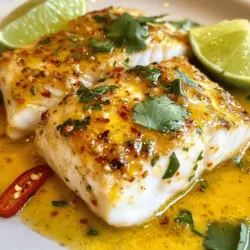

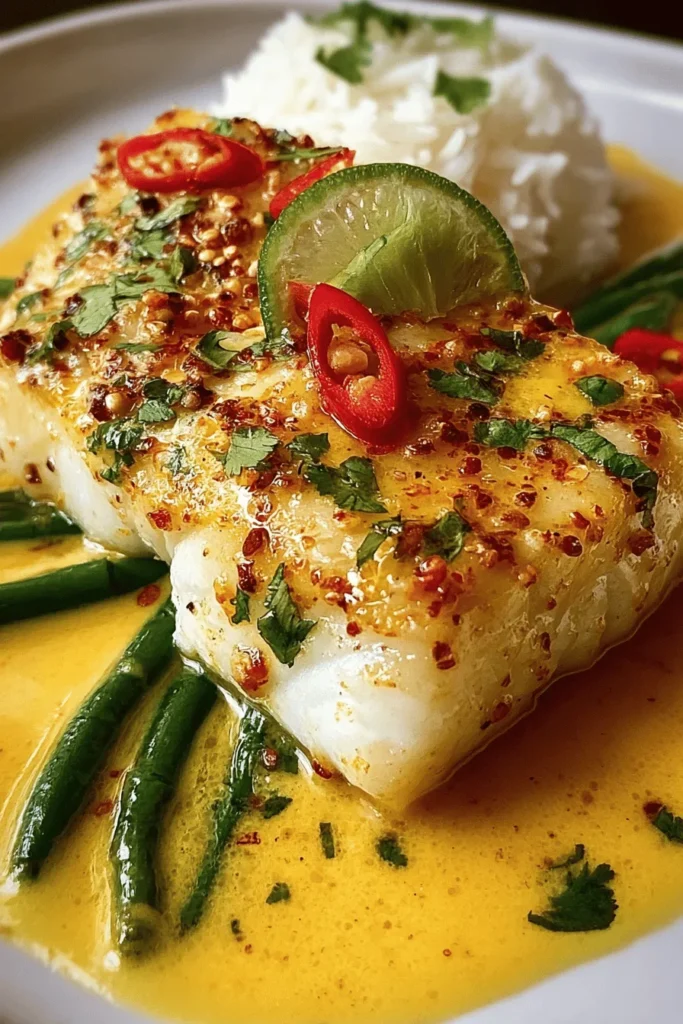

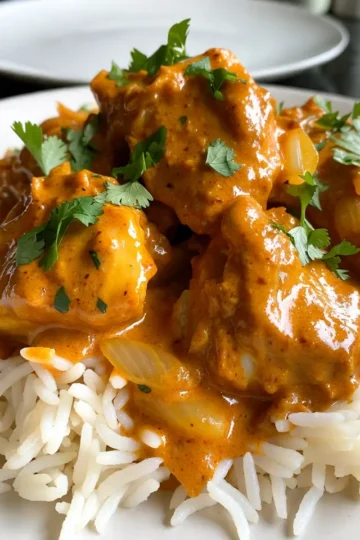
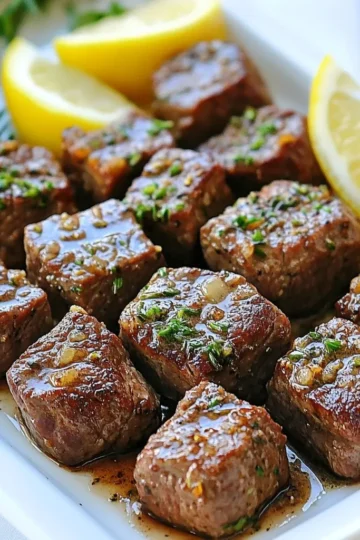
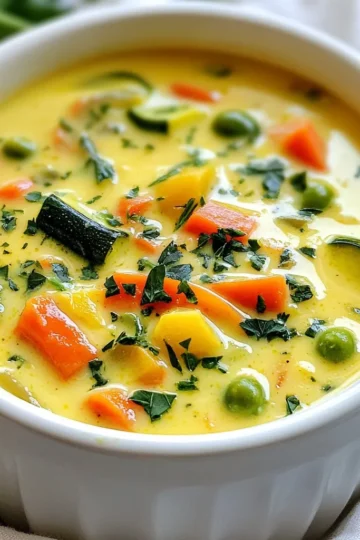
Leave a Reply